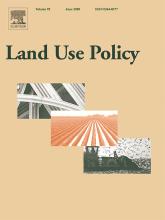Resource information
Distinguishing between the ecosystems’ capacity to generate ecosystem services (ES) and the actual use of these service (ES flow) in ES assessment and mapping is important to develop an understanding of the sustainability of ES use. This study assesses the spatial variation in ES capacity and flow in the Mediterranean small island state of Malta. The services included in this study were crop provisioning, beekeeping and honey production, fodder and livestock production, crop pollination, air quality regulation, and aesthetic ES. This assessment develops different spatial models, which make use of available datasets, causal relationships between datasets, including a generated land use land cover (LULC) map, and statistical models and indicators based on direct measurements. Individual ES indicators were mapped to visualise and compare their spatial patterns across the case study area. Subsequently, an analysis of ES associations and bundles was carried out using Pearson parametric correlation test, for both ES capacity and flow indicators generated from this study, and through Principal Component Analysis. Results demonstrate several significant synergistic interactions between ES capacity and flow in rural landscapes characterised with agricultural and semi-natural LULC categories, indicating high landscape multifunctionality. In contrast, predominantly urban areas tend to be characterised with a low ecosystem capacity and ES flow, suggesting that ES delivery in the landscapes of the study area is determined by land use intensity. These findings support the notion that multifunctional rural landscapes provide multiple ES, making an important contribution to human well-being, and that land use planning that develops green infrastructure in urban areas can significantly contribute to support biodiversity and ES delivery.


